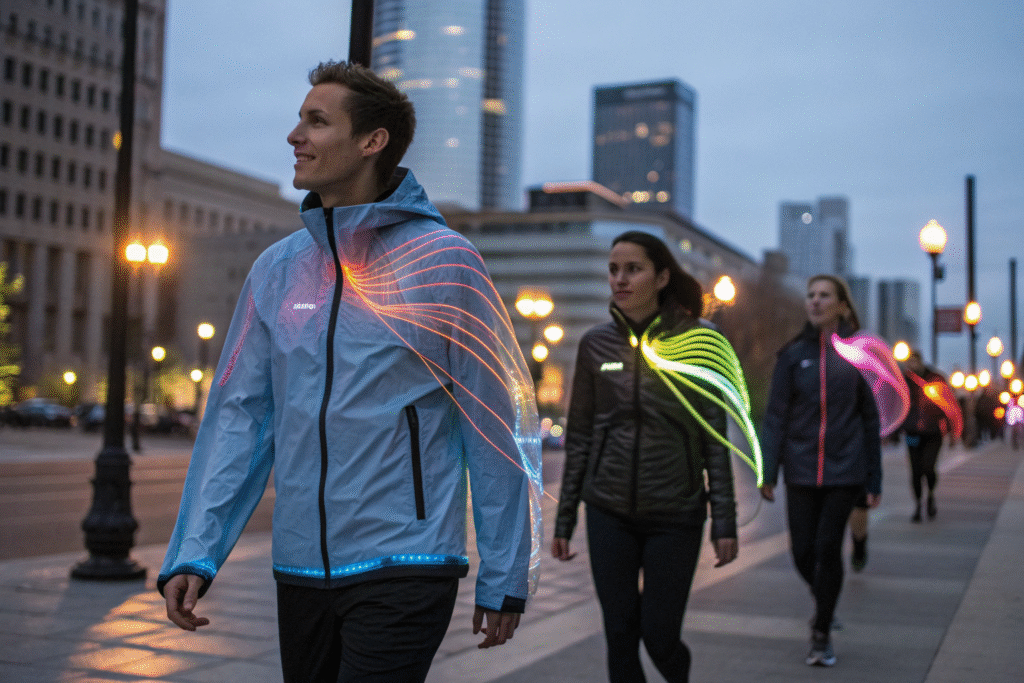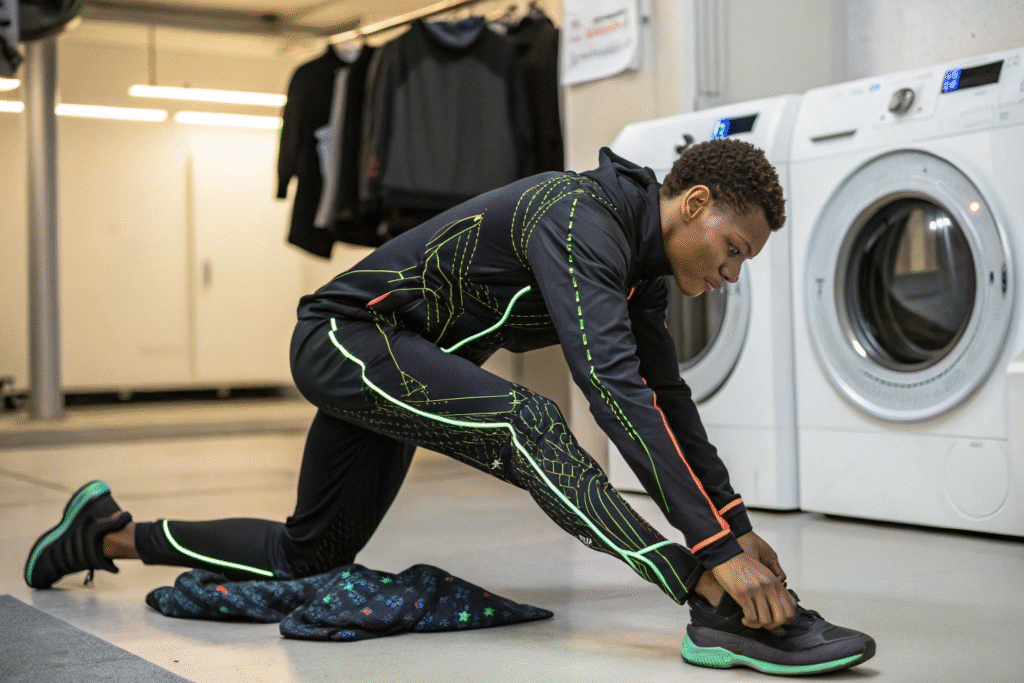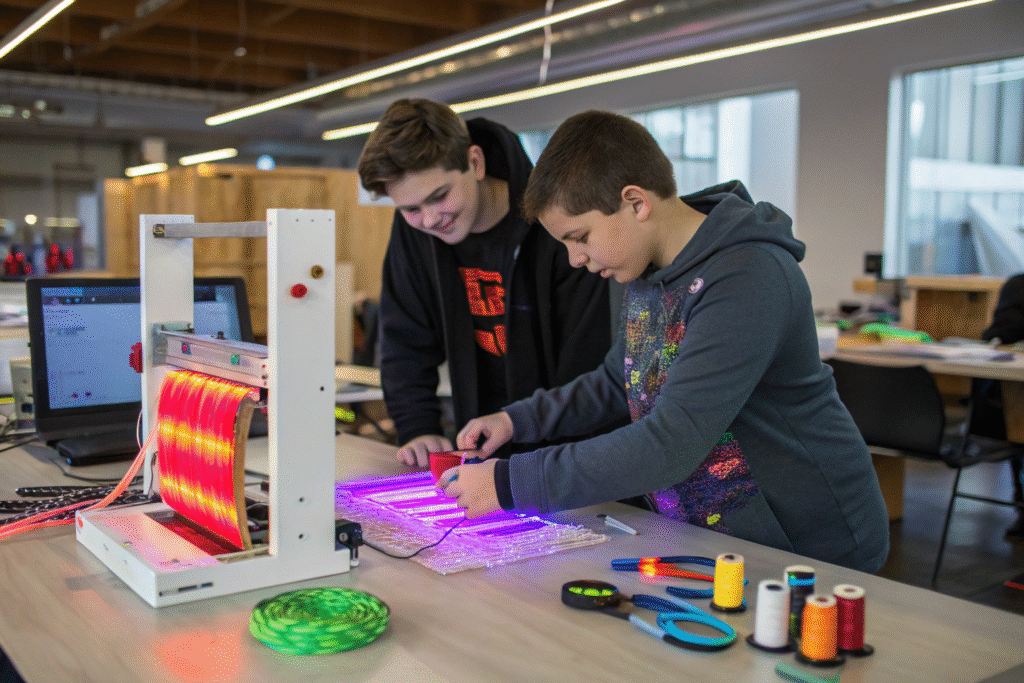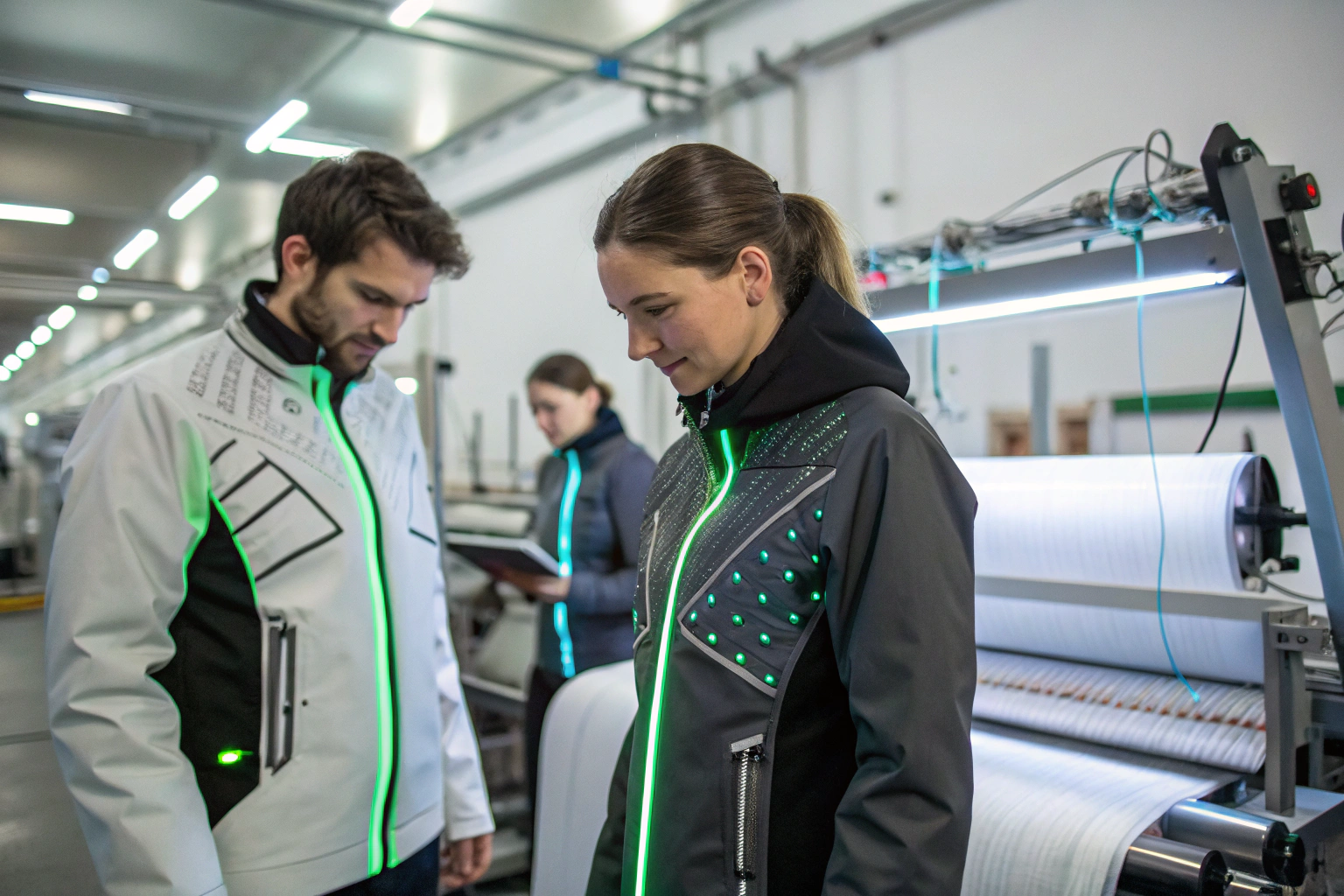In today’s fast-changing world of smart textiles, one question keeps coming up: how can we make clothing and fabrics that power themselves? Many buyers and researchers are frustrated because wearable devices still rely on bulky batteries, which limit their use. People want textiles that are light, breathable, and can harvest energy from daily movements. Without such innovations, wearable technology cannot fully meet the demands of health monitoring, fitness, and smart fashion.
The latest self-powered triboelectric nanogenerator textiles (TENGs) are changing this picture. They combine energy harvesting with storage, use highly stretchable and washable materials, and even work with machine learning to monitor human motion more accurately. These new fabrics are moving from the lab into real-world use, offering power autonomy for wearables and new possibilities for healthcare, sportswear, and smart living.
As a textile manufacturer myself, based in Keqiao—the hub of China’s textile world—I have seen how these breakthroughs are shaping the future. Let’s look at the most exciting directions.
How Do Self-Charging TENG Textiles Work?
When people move, fabrics rub and create triboelectric charges. Traditional textiles lose this energy. TENG fabrics capture it, convert it into usable electricity, and now even store it. This solves one of the biggest problems: energy discontinuity.
Self-charging textiles combine TENG with supercapacitors or thin-film batteries. They can generate and store energy at the same time. This means a shirt or jacket can power sensors without needing external charging. It is a big step toward autonomous wearable systems.

What Are the Advantages of Integrated Storage?
These hybrid fabrics offer three key benefits:
- They deliver continuous power for wearables.
- They reduce the need for external batteries.
- They make smart textiles more practical for long-term use.
For example, researchers have published results in Journal of Semiconductors showing how woven fabrics with embedded supercapacitors can provide steady current. Another detailed review in MDPI Nanomaterials confirms that self-charging textiles are moving from concept to real-world application.
How Can They Be Used in Daily Life?
Self-charging TENG fabrics are ideal for fitness clothing, medical monitoring devices, and work uniforms. Imagine a worker’s jacket that powers health sensors during long shifts, or yoga leggings that track body movements without a charging cable. This is the real potential of energy-autonomous fabrics.
Why Are Multi-Source Energy Harvesting Textiles Important?
One drawback of early TENG fabrics was that they only harvested motion energy. But the latest designs are now able to capture energy from different sources like wind, sound, and vibrations.

How Do Multi-Source TENGs Work?
These fabrics use advanced structures such as nanofiber layers and conductive coatings to be sensitive to multiple types of mechanical input. A single garment can gather energy from body movement, footsteps, sound waves in the environment, and even airflow. This versatility makes them more reliable in real-world conditions.
A study on ScienceDirect shows textiles that can harvest both wind and sound simultaneously. Another breakthrough published in ScienceDirect Nano Energy explores fabrics that combine motion harvesting with smart algorithms to maximize efficiency.
Where Are They Useful?
Multi-source harvesting textiles have big potential in:
- Military uniforms for powering radios and sensors in the field.
- Outdoor gear for hikers, campers, and explorers who need reliable energy.
- Urban clothing that turns noise and wind into useful electricity.
This ability to capture diverse energy sources brings textiles closer to being a true power solution, not just a novelty.
Are Wearable TENGs Becoming More Durable?
Another big question for real-world use is durability. People ask: can these fabrics be washed, stretched, and worn daily without losing function? The latest innovations give a clear answer: yes.

How Do Stretchable and Washable TENGs Work?
Researchers have used liquid metal fibers, silicone-coated stainless steel threads, and other flexible materials to make fabrics that stretch 100% to 400% without breaking. They also survive multiple washing cycles. This makes them suitable for real garments, not just lab tests.
For example, work on ResearchGate shows highly stretchable designs that stay functional after many uses. Another promising direction is fabrics with protective hydrophobic coatings that maintain function even in sweat and rain.
Why Is Durability Essential?
If TENG textiles cannot handle daily life, they will never be adopted by brands or consumers. Durability is key for sportswear, medical textiles, and uniforms. A washable TENG T-shirt or jacket that works for months is the difference between a lab experiment and a commercial product.
Can TENG Textiles Be Made More Accessible?
Until recently, the biggest challenge was complexity. Making TENG fabrics required specialized labs and expensive tools. But new frameworks are changing that.

What Is texTENG?
The new texTENG framework allows researchers, startups, and even makers to create TENG fabrics using familiar techniques like weaving, knitting, and braiding. It uses accessible materials, lowering the barrier for prototyping.
Details are available on arXiv, which outlines step-by-step guides for textile engineers to develop TENG prototypes. Combined with low-cost conductive yarns and printable coatings, this opens the door for faster adoption.
Why Does Accessibility Matter?
Accessibility drives innovation speed. If more people can experiment with TENG fabrics, we will see faster improvements and more creative applications. From DIY wearable projects to university labs, texTENG allows broader participation. It could accelerate the path from research to commercial products.
Conclusion
The latest self-powered triboelectric nanogenerator textiles are no longer just a futuristic idea. They are becoming more practical, more durable, and more versatile. With integrated storage, multi-source harvesting, washable and stretchable designs, and DIY frameworks, these fabrics are moving into real-world use. For the first time, it looks possible that clothing itself will serve as a reliable energy source for wearables.
At Fumao Fabric, we follow these innovations closely because they shape the future of global textile trade. If you are a brand, designer, or factory looking to explore advanced smart fabrics or build your own textile products, we would be glad to work with you. You can contact our Business Director, Elaine, at elaine@fumaoclothing.com to discuss how Shanghai Fumao can support your next fabric order.










